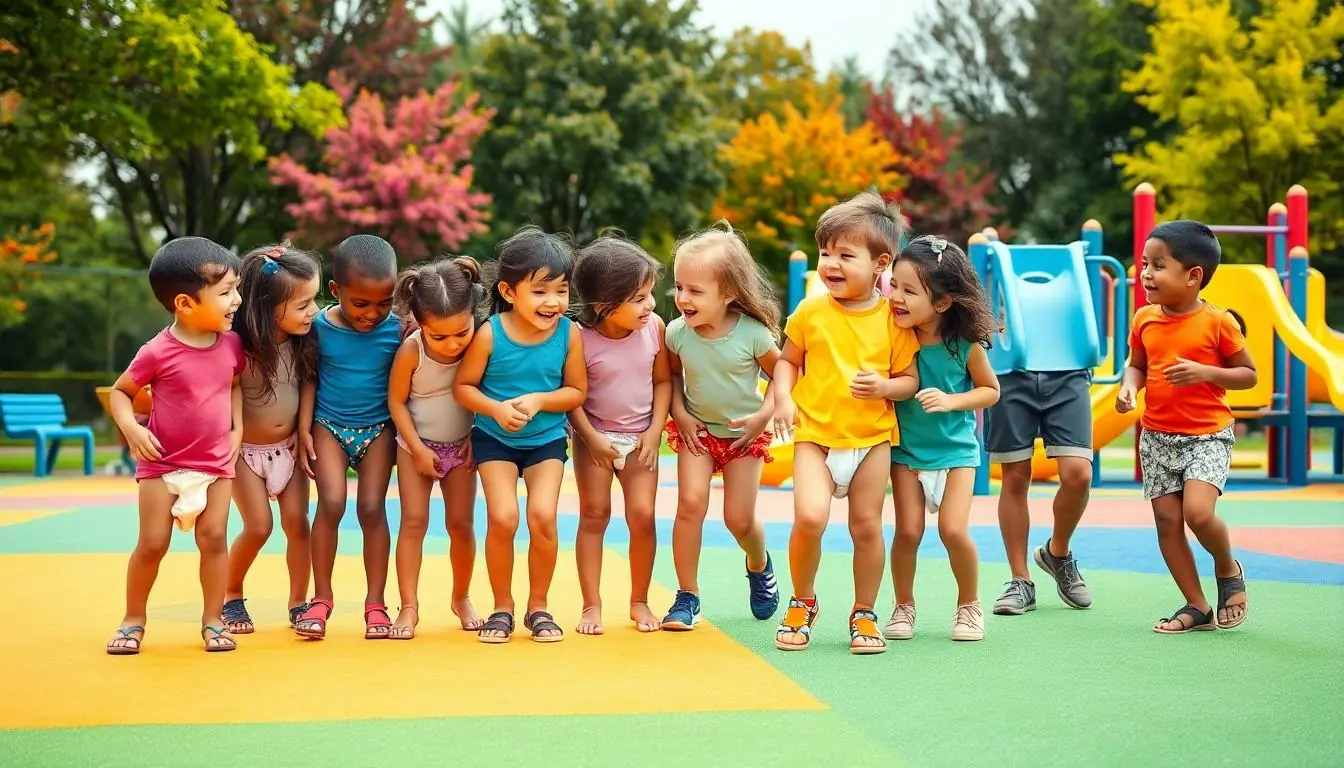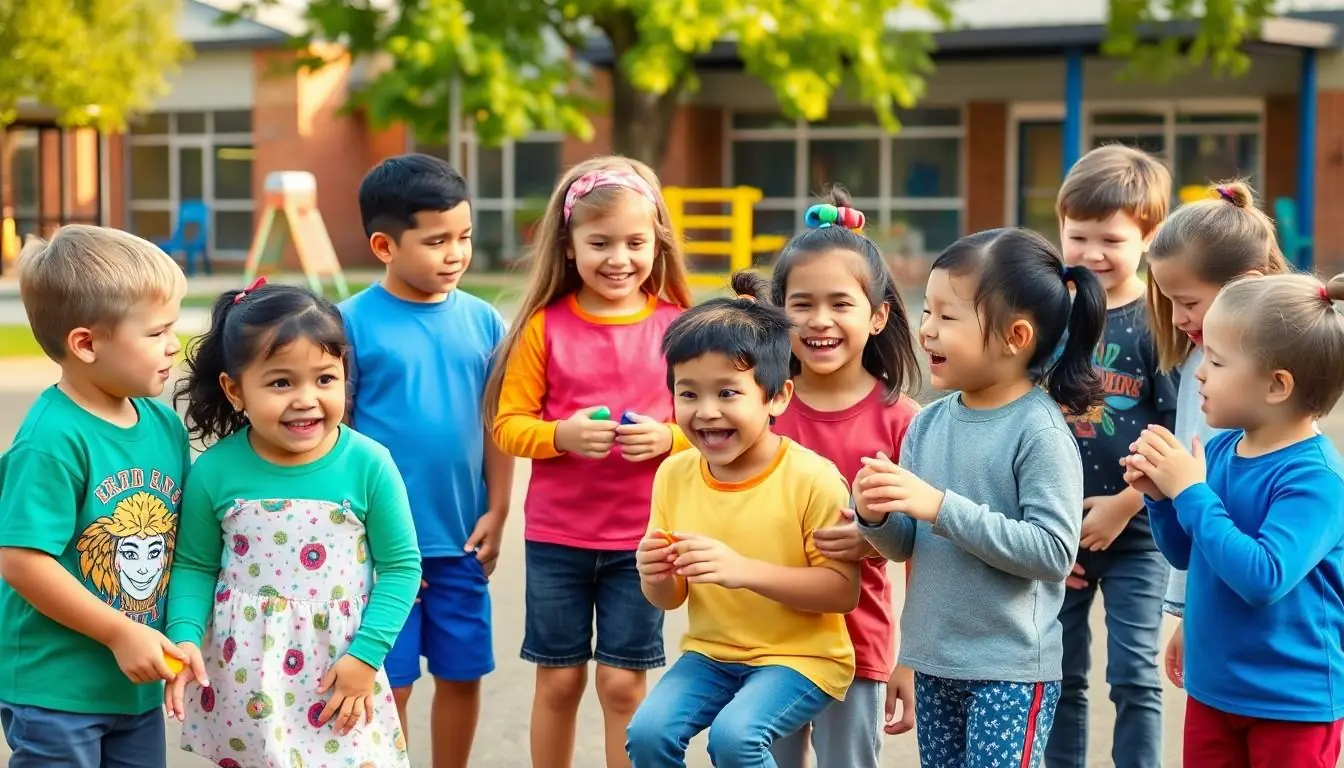Picture this: a bustling elementary school playground filled with laughter and excitement. Amidst the chaos, a group of older kids is proudly sporting their diapers. While it might sound like a scene from a quirky sitcom, the reality is that some kids face unique challenges that lead them to wear diapers well beyond the toddler years.
Navigating the world of older children in diapers can spark curiosity, confusion, and even a few chuckles. But understanding this phenomenon is crucial for fostering empathy and support. After all, every child deserves to feel comfortable and confident, regardless of their circumstances. So, let’s dive into this topic with a mix of humor and insight, exploring the reasons behind this trend and what it means for families and schools alike.
Table of Contents
ToggleUnderstanding the Issue
Older children in diapers present a unique challenge within elementary school settings. Various factors contribute to this situation, requiring a thoughtful understanding from peers and educators.
Reasons for Diaper Use
Medical conditions often play a significant role in the continued use of diapers. Disabilities like autism or specific medical issues can hinder toilet training. Environmental factors, such as transition into school or changes at home, may also influence a child’s readiness. Emotional challenges affect some children, making them hesitant to take the next step. Additionally, sensory processing disorders might cause discomfort during toilet use. Each child’s situation is unique and deserves attention.
Impact on Development
Supporting children who wear diapers can shape their emotional and social growth. Confidence can increase when they feel accepted within their peer group. Academic performance might not be directly impacted, yet stress from bullying can hinder learning. Social interactions depend on peer acceptance, fostering a sense of belonging. Access to appropriate resources ensures children receive necessary support, which could improve their experiences. Overall, understanding this issue enhances the school environment for all.
Social Perspectives
Understanding social dynamics around older kids in diapers is crucial for fostering acceptance and support. A child’s experience can significantly vary based on peer reactions and parental concerns.
Peer Reactions
Reactions from peers play a vital role in shaping an older child’s self-esteem. Acceptance can vary widely; some children integrate smoothly, while others face bullying or exclusion. Kind classmates often provide reassurance, encouraging a sense of normalcy. Negative interactions, such as teasing, can lead to emotional distress, complicating social interactions further. Schools need to promote empathy and awareness among students to create an inclusive environment. Programs focusing on peer support can prove beneficial; they help children understand diversity in developmental needs.
Parental Concerns
Parents often carry significant worry about their child’s social acceptance. They contemplate how peers perceive diaper use, fearing judgment or ridicule. Conversations about body autonomy become essential, empowering children to express their needs. Balancing between support and fostering independence is a common challenge parents face. Some parents seek resources, such as support groups or professional advice, to navigate these concerns effectively. Open dialogues with educators about children’s specific needs can foster an understanding environment. Overall, parental support and proactive communication help enhance children’s experiences at school.
Strategies for Support
Support for older kids in diapers requires intentional communication and the creation of an understanding environment. Educators, parents, and peers play crucial roles in fostering acceptance and empathy.
Communication with Schools
Establishing a dialogue with school staff is essential. Share concerns and provide context about the child’s needs. Engaging teachers in understanding the specific challenges faced by each child promotes a supportive atmosphere. Regular check-ins with school personnel help track progress and address issues promptly. Encouraging staff to participate in sensitivity training empowers them to respond compassionately. Collaborating on strategies ensures that everyone involved is aware of the child’s requirements.
Creating a Supportive Environment
Creating a safe space is vital for children who continue to wear diapers. Sensitivity from peers can foster a sense of belonging and acceptance. Encouragement from adult figures demonstrates that differences should be respected. Promoting inclusive activities helps all students learn about diversity in development. Establishing peer support groups allows children to share experiences and build friendships. Ensuring accessible resources and education on developmental differences facilitates understanding. Positive reinforcement in school settings boosts confidence amongst all students.
Resources and Information
Support networks play a vital role in assisting older kids in diapers. Support groups create environments where families can share experiences and resources. These groups often provide emotional support and practical tips. Many online forums and local meetups allow parents to connect with others facing similar challenges. Organizations focused on developmental disabilities may also offer valuable insights.
Professional guidance offers additional resources for parents and educators. Specialists in pediatric development provide tailored strategies for supporting children. Therapists experienced in sensory processing or emotional regulation can address specific needs. Schools may benefit from collaborating with occupational therapists to create inclusive environments. Regular consultations with healthcare providers ensure individualized support for each child’s unique circumstances.
Conclusion
Understanding the complexities surrounding older kids in diapers is crucial for fostering a compassionate school environment. By promoting empathy among peers and educators, it’s possible to create a supportive atmosphere that encourages acceptance and belonging.
Parents and educators must engage in open dialogues to address the unique needs of these children. Implementing strategies such as peer support programs and sensitivity training can significantly enhance the school experience for everyone involved.
Ultimately, by embracing diversity and promoting understanding, schools can help all children thrive, ensuring that those who face challenges feel valued and included in their educational journey.





